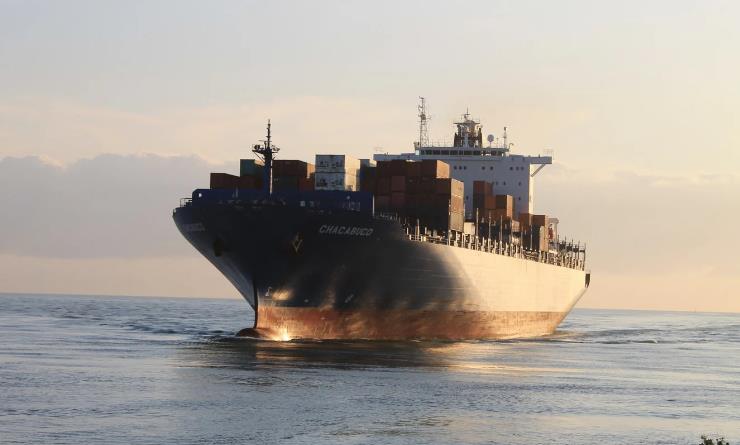Table of Contents
India has been a hub of trade and commerce for centuries, attracting merchants worldwide. European trading companies were no exception when it came to being fascinated by India’s rich resources, vibrant culture, and strategic geographic location. From spices to textiles and everything in between, the allure of Indian goods was too strong for these traders to resist. In this blog post, we’ll explore what attracted European trading companies to India and explore some notable examples. So join us on this pilgrimage through time as we uncover the secrets behind one of history’s most fascinating trade routes!
Meaning of trading companies
Trading companies were business entities that emerged during the era of colonialism in Europe, with a primary focus on overseas trade and commerce. These companies had exclusive rights granted to them by their respective governments to engage in commercial activities outside their home countries.
The main objective of trading companies was to acquire goods from foreign lands and sell them back at higher prices in European markets. This way, they could generate profits for themselves and contribute towards the growth of their home economies.
 Trading companies played a crucial role in expanding global trade routes during this period, facilitating the exchange of products between different parts of the world. In addition, they acted as intermediaries between producers and consumers, providing a reliable means for transporting goods across vast distances.
Trading companies played a crucial role in expanding global trade routes during this period, facilitating the exchange of products between different parts of the world. In addition, they acted as intermediaries between producers and consumers, providing a reliable means for transporting goods across vast distances.
Over time, these trading companies became increasingly powerful and influential, often exerting significant political control over regions where they operated. However, despite their prominence and success in international trade, many trading companies eventually declined due to changing economic conditions and geopolitical factors. Trading companies were integral to early modern globalization that helped shape our world.
What attracted European trading companies to India?
India has always been a land of spices, textiles and precious stones. These were some of the primary commodities that European trading companies were attracted to in India during the 16th century. The Portuguese were among the first Europeans to start trade relations with India due to their prime location on trade routes between Europe and Asia.
The Dutch also saw potential in trading with India for textiles, spices and indigo dyes which they exported back home. As a result, the British East India Company was started in 1600 as a joint-stock company hoping to exploit opportunities in Indian trade. They quickly realized that cotton was one of India’s biggest exports, expanding their interest in textile manufacturing.
 Apart from natural resources, what made India very attractive was its vast population which created an enormous demand for goods. This led European traders to set up factories and warehouses throughout the country, making it easier to access these markets directly.
Apart from natural resources, what made India very attractive was its vast population which created an enormous demand for goods. This led European traders to set up factories and warehouses throughout the country, making it easier to access these markets directly.
Moreover, many Indian rulers welcomed these traders as they brought new technological solutions to certain problems alongside profitable business opportunities leading to economic development within their territories.
Several factors lured European trading companies towards doing business with India, such as its strategic location on global trade routes along with abundant natural resources like spices, textiles, and precious stones combined with a large consumer base providing endless market opportunities that could be easily tapped by setting up factories across different parts of this vast country.
Examples of European trading companies
During the 17th and 18th centuries, European trading companies were drawn to India for its wealth of resources and strategic location. Some of these companies included the British East India Company, Dutch East India Company, and French East India Company.
The British East India Company was established in 1600, focusing on trading textiles, spices, and tea. They quickly gained control over large parts of India through alliances with local rulers and eventually became dominant in Indian trade.
 Similarly, the Dutch East India Company was founded in 1602 to compete with other European powers to access Asian markets. Their presence in India was primarily focused on controlling the spice trade by establishing a series of forts along the coast.
Similarly, the Dutch East India Company was founded in 1602 to compete with other European powers to access Asian markets. Their presence in India was primarily focused on controlling the spice trade by establishing a series of forts along the coast.
The French East India Company also had a significant presence in Indian trade during this period. Established in 1664 to challenge British dominance in overseas trade, they traded silk fabrics from Bengal and Carnatic regions.
These European trading companies brought about significant economic, cultural, and political changes within Indian society at that time.
Conclusion
To sum up, European trading companies were attracted to India for various reasons. First, the country was rich in spices, textiles and precious stones, making it a lucrative trade market. Additionally, the Mughal Empire provided a stable political environment that allowed traders to conduct business quickly.
The arrival of Europeans in India marked a significant turning point in Indian history. They brought along new technology and ideas that changed the course of Indian society forever. Unfortunately, however, this also led to exploitation and colonization, which had lasting effects on the country.
Today, India remains an important player in international trade with its growing economy and diverse industries. In addition, its rich cultural heritage, strategic location and vast markets attract traders worldwide. Tage European trading companies may have changed, but the same draw remains.
To conclude, European trading companies were attracted to India due to a combination of factors such as its abundant resources, strategic location and diverse culture. In addition, the allure of spices brought many traders to Indian shores in search of exotic goods that would fetch high prices back home. Over time, these initial connections developed into long-standing trade partnerships that shaped history.
Today, India remains an important player in global trade, with many multinational corporations setting up operations within its borders. Moreover, its vast consumer market and skilled labour force make it an attractive destination for businesses looking to expand internationally. As we look towards the future, it is clear that India will continue to play an influential role in shaping the world economy for years to come.
Has also become a significant journey attraction drawing millions of visitors worldwide every year.
While European trading companies may have been initially drawn to India for its wealth and resources, they left behind a legacy that still resonates today. As we explore different parts of our shared history, we can learn valuable lessons about how past events shape our present reality.

